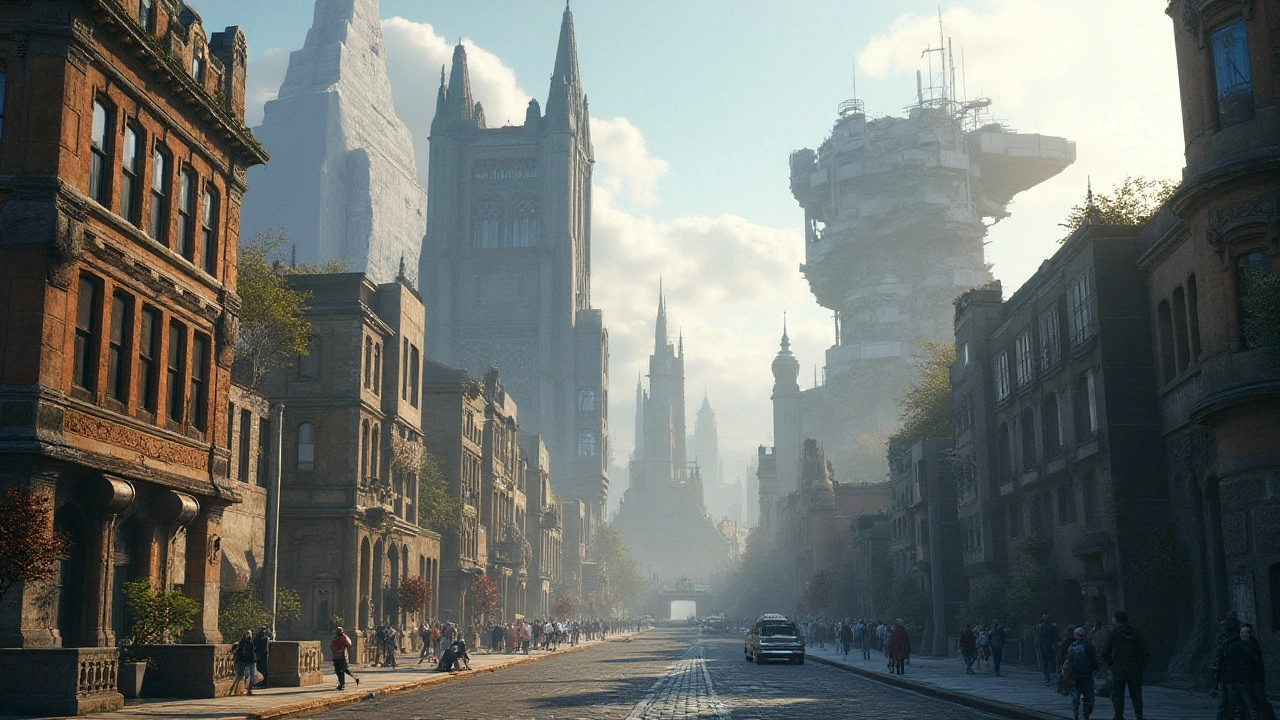Chaos in Art & Architecture: How Disorder Shapes Design
Chaos isn’t just a mess. In art and architecture, it’s a tool: a way to break rules, provoke feeling, and make buildings or rooms unforgettable. If a facade feels alive, or an interior surprises you at every turn, that’s often deliberate disorder — controlled chaos. This page helps you spot it, understand why creators use it, and use it yourself without making things ugly.
Where chaos shows up
Look at Expressionist architecture: shapes bend, surfaces twist, and the usual symmetry is gone. That sense of unpredictability comes straight from a desire to express emotion. Postmodern buildings do something similar but with jokes and references — clashing colors, mismatched details, deliberate visual noise. Baroque and Rococo interiors pile on drama with heavy ornament, curved lines, and dense patterns; that’s chaos through abundance rather than shape.
Chaos can also come from mixing eras. Revival styles next to ultra-modern glass can feel chaotic on the street but lively in the right context. In cities, chaotic layouts (narrow lanes, sudden plazas, odd sightlines) often make places feel more human and surprising than perfectly gridded blocks.
How to use chaotic design—practical tips
Want energy without losing control? Start with one chaotic element. Pick a bold shape, a striking color combo, or an unexpected texture and let everything else stay simple. For example, a curvy expressionist chair in a minimalist room creates a focal point without overwhelming the space. In architecture, a single playful facade panel or an irregular window pattern can give a building personality without risking stability.
Balance is your friend. Pair chaotic pieces with calm ones: heavy ornament needs plain walls, a wild pattern works best on a rug or throw rather than every surface. Think of chaos like spice — a little enhances flavor, too much ruins the dish.
Use rhythm to organize chaos. Repeating an odd shape or color at intervals ties disparate elements together and makes them read as intentional, not random. Lighting helps too: highlight chaotic features and keep supporting areas shadowed or neutral so the eye knows where to stop.
When renovating or designing public spaces, test chaotic ideas at small scale first. A mural, a temporary installation, or a pop-up pavilion can show whether people respond well before you commit to permanent changes.
If you want examples, check pieces on Expressionist and Postmodern architecture, Baroque and Rococo interiors, or modern mixes of revival styles. Each shows a different way chaos can work — emotional shape, visual overload, playful reference, or era-mixing. Use the approach that fits your goal: stir feeling, tell a story, or simply make people look twice.
Chaos doesn’t have to mean bad design. Done with purpose and balance, it makes art and architecture feel alive.

Embracing Deconstructivism: Unleashing Architectural Chaos
Deconstructivism challenges traditional architectural norms by celebrating disarray and fragmentation. This movement emerged in the late 20th century as architects sought to break free from conventional forms and embrace unpredictability. It highlights the beauty found in asymmetry and non-linear designs, with iconic structures like Frank Gehry's Guggenheim Museum exemplifying its principles. Understanding deconstructivism offers insights into how it reshapes our definition of space and design.
Read more